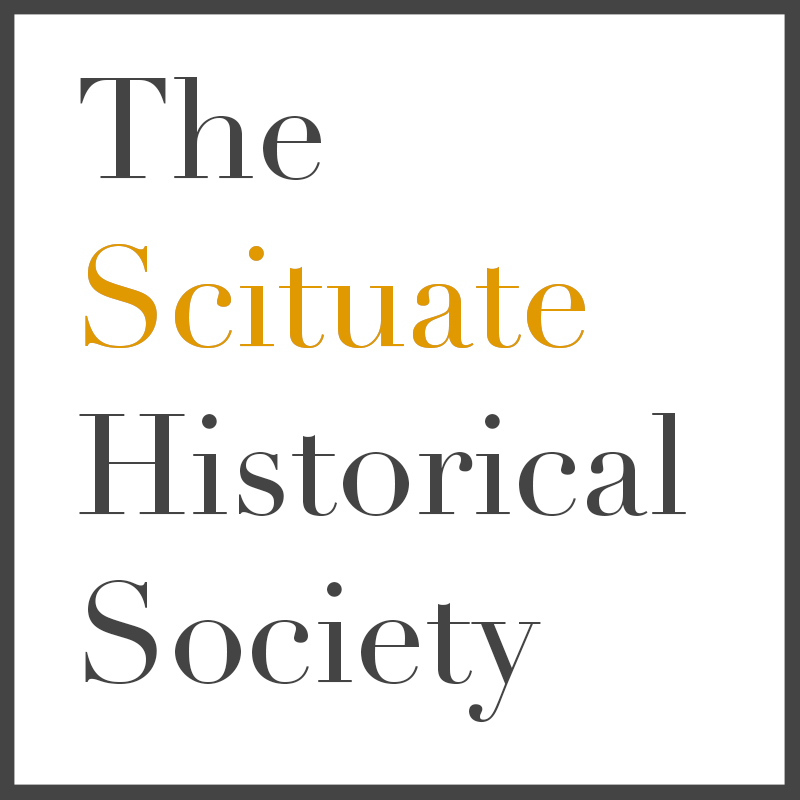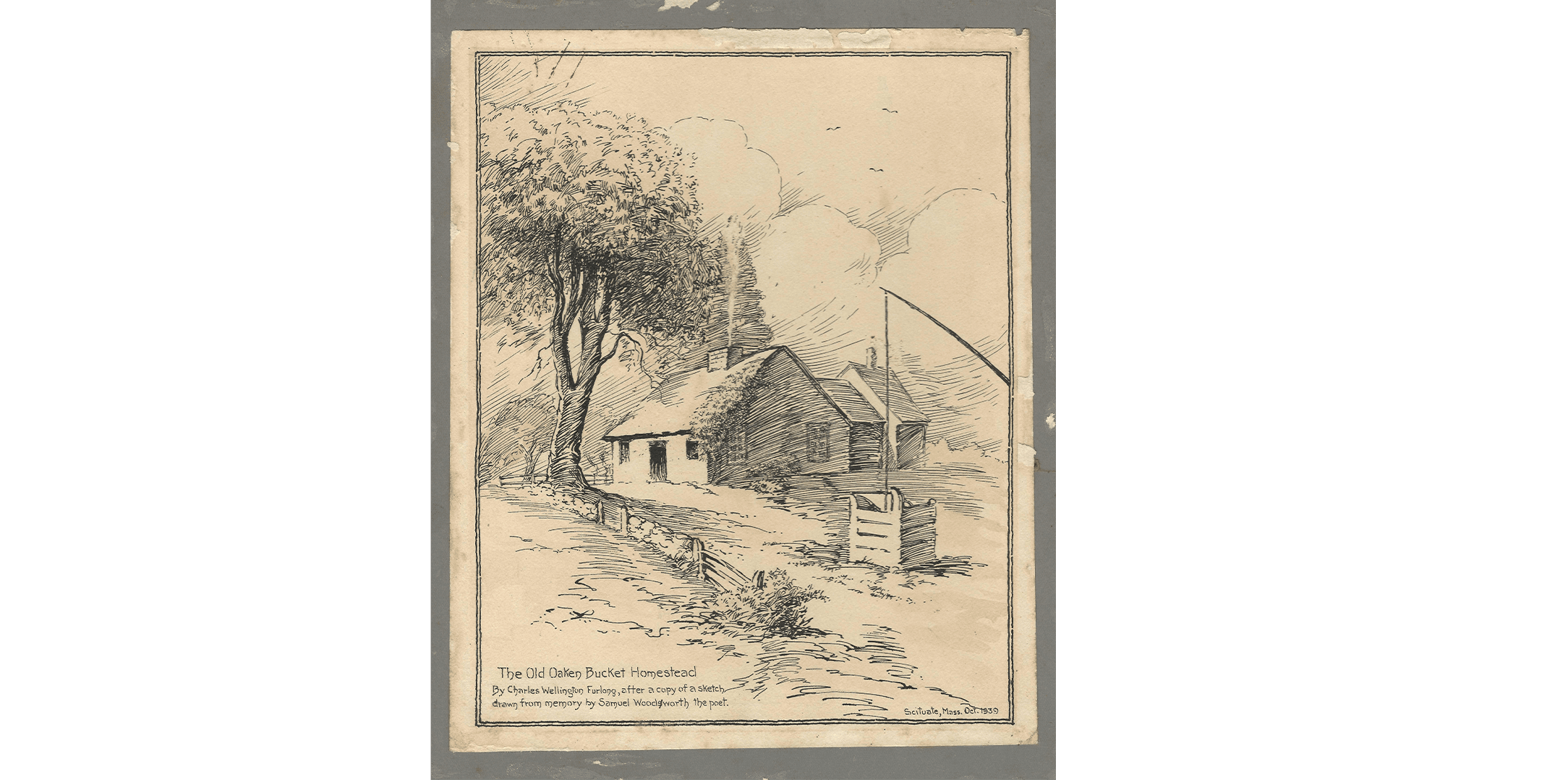COLLECTION HIGHLIGHT
Charles Wellington Furlong
Old Oaken Bucket Homestead, 1939
Ink on Paper
Dims: H 11 ¾” x W 8”
Colonel Charles Wellington Furlong (1874 -1967) was an artist, writer, explorer, college professor, naturalist, collector, cowboy and photographer of the American West.
Furlong was born in Cambridge in 1874, and studied at the Massachusetts Normal Art School. While he taught at Cornell University, Furlong also pursued a series of expeditions to North Africa, Tierra del Fuego, Venezuela, and West African islands. His many notable accomplishments include discovering the wreck of the frigate U.S.S. Philadelphia while exploring Tripoli, and becoming the first American to cross inland Tierra del Fuego. On the Tierra del Fuego expedition – funded by Harper’s Magazine in 1907 to 1908 – Furlong mapped and developed navigational charts of the region. During World War I, Furlong produced a series of tactical field handbooks specializing in geographic intelligence. He later served as a member of the American delegation to the Paris Peace Conference, as well as a military aide to President Woodrow Wilson.
As a boy, Charles Wellington Furlong and his brothers spent their summers in Scituate with Charlotte Merritt, whom Furlong called his great-aunt, and her husband, mariner Benjamin Merritt. Furlong later wrote that listening to Benjamin’s sea stories inspired him to a life of exploration and adventure. Furlong also recalled listening to neighbor, Becky Bates, recount how she and her sister Abigail had scared away the British during the War of 1812 with only a fife and drum. In later years, Colonel Wellington Furlong lived at “Eight Gables,” his home on Old Oaken Bucket Road.
Among Furlong’s many drawings in the Society’s collection is this pen and ink sketch of the Old Oaken Bucket Homestead. Poet Samuel Woodworth famously immortalized his boyhood days spent here on this Scituate farm in the poem “The Old Oaken Bucket.” This view of the homestead is unique in that it is a copy of a sketch drawn by Samuel Woodworth from his memory.
This homestead is today listed on The National Registry of Historical Homes and is overseen and maintained by the Scituate Historical Society. See our Explore page for more information on the homestead.
In addition to sketching the Old Oaken Bucket Homestead, and other sites of local significance, Charles Wellington Furlong was instrumental in the creation of a greenway along route 3A. In 1899, Colonel Wellington Furlong married Eva Earll, with whom he had two children, Roger Wellington Furlong and Ruth Earll Furlong. He was later remarried to Edith Virginia Calista Spinney.
When he died in 1967, Colonel Wellington Furlong left behind an extensive record of his travels and work through his prolific writings, drawings, paintings and photographs.
Curriculum Connections
This Scituate Historical Society Collections Highlight connects with the following Massachusetts State Curriculum Frameworks:
History and Social Science Framework
3.T1 Massachusetts cities and towns today and in history:
2. Research the demographic origins of the town or city (e.g., the Native People who originally lived there or still live there, the people who established it as a colonial town, its founding date, and the free, indentured, and enslaved women and men who contributed to the wellbeing of the town). Explain that before the mid-19th century most of the settlers were of Native American, Northern European, or African descent; describe the current population and immigrant groups of the 20th and 21st centuries and interview family members, friends, and neighbors to obtain information about living and working there in the past and present.
WHII.T3 The global effects of 19th century imperialism:
4. Analyze the cultural impact of colonial encounters and trade on people in Western nations, drawing on examples such as a. Asian furniture, porce-lain, and cloth made for export b. the introduction of new foods into Eu-rope and the United States c. emerging academic fields of archaeology and cultural anthropology d. collections of art and artifacts from around the world exhibited in international expositions and museums e. the influ-ence of Japanese and African art on European art styles of impressionism and cubism f. colonialism portrayed in literature and journalism by writers such as Rudyard Kipling, Edward. D. Morel, Joseph Conrad, Robert Louis Stevenson, and Isak Dinesen (Karen Blixen)
WHII.T4 The Great Wars, 1914–1945:
1. Analyze the factors that led to the outbreak of World War I (e.g., the emergence of Germany as a great power, the rise of nationalism and weakening of multinational empires, industrial and colonial competition, militarism, and Europe’s complex alliance systems)
2., b. the expansion of World War I beyond Europe into a global conflict (including the mobilization of Asian and African colonial subjects as troops to support military efforts and the reasoning for and impact of United States involvement; the impact on various nationalities, religious and eth-nic groups)
3. Analyze the political, social, economic, and cultural developments fol-lowing World War I: e. the establishment of European mandates in the Middle East and the creation of modern state boundaries in the region.


